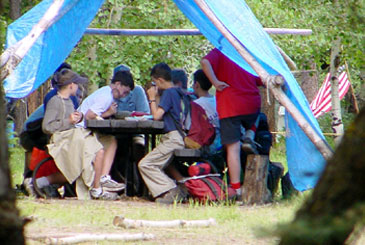Living Off the Grid

What does it really mean to live off the grid?
 More and more families are choosing off the grid living. Related Links |
As of 2013, current estimates are that 1.7 billion people in the world live off the grid. According to Home Power Magazine, at least 180,000 families are living off the grid in the United States and that number increases each year. The trend is on the upswing in part because the Internet provides easy how to guides and the world population has become more environmentally conscious, but what exactly does it mean to live off the grid?
The term "off the grid" is defined as not requiring utilities, such as electricity, water, sewer, natural gas, heat, and other services. To truly live off the grid means a house operates without the assistance of any public utility services. To achieve this independence, one's electricity needs to be on-site and powered by renewable energy sources, such as wind, solar or geothermal. Generators and fuel reserves are also needed. Another option is to simply do without electricity. Mennonite communities do this, as well as some Native American reservations, including the Taos Pueblo in New Mexico. However, doing without water is not an option. Those living off the grid must have a water source, such as a nearby lake, stream, well or rainwater. Filtration is used for some water sources.
Reasons for Going Off the Grid
Many websites and books have discussed reasons for living off the grid. The two reasons mentioned most often are financial—because if done right it saves money on utilities—and to lessen the impact one has on the environment. It took nine years for Gene Foster to make his 40-acre Paris, Arkansas home self-sufficient in four major areas—cooling, electricity, heating, and hot water. In a recent interview, Foster told Home Power Magazine that he chose off-grid living after he started asking himself, "How can I get a better return on the investment in my new home, and plan for my energy future?" Like most people who go off-grid, Foster focused on making his home self-sufficient in certain areas, while still relying on the larger community in other ways, such as food supply.
"You can't get off all of the grids all the time. It's a question of which grids you choose to get off of and in what way and for how long," said Nick Rosen, founder of the Off-Grid website, in a 2012 interview with Mother Nature Network. Rosen also said that the off-grid demographic is evolving and that communal living is becoming the more popular way to go, "There's a huge generation of 1970s back-to-the-land movement people who are now getting pretty old and they're sitting on these huge tracks of land that can't be broken up. The idea of land trusts is being used as a way these older people can get some new residents to help look after them and take over part of the land as the older generation dies out."
Environmental Concerns
Even though many move off-grid to save money and protect the environment, in some cases, off-grid living can be more costly and do damage to the environment. Living off the grid requires equipment and supplies, like generators, charge controllers and fuel which are not needed for those living on the grid. Living off the grid requires upkeep and restocking of needed supplies. If one is relying on solar power, it requires that one live in certain regions of the world. In 2005, California introduced the California Solar Initiative Program to promote the use of solar and wind power generation instead of batteries. Many batteries used to run generators contain toxic lead acid, so the state introduced the initiative to encourage the use of solar or wind power electricity as an alternative.
In 2012, the Aboriginal Affairs and Northern Development of Canada published an official list of environmental concerns for their off the grid communities. On the list were these warnings: using diesel generators produces greenhouse gas emissions, which contributes to climate change and health problems for people in the community; transportation of diesel fuel to rural areas increases the risk of fuel spills and leaks, which contaminates soil and water; transportation of fuel by trucks creates greenhouse gas emissions. Canada currently has 175 off-grid communities that have been around for at least five years and have at least ten permanent buildings.
Off-grid living can also be found in Africa. For example, solar-powered electric systems have been installed in Kenyan villages, a process started in 2010. LED lights and solar panels make this source of electricity more affordable, perhaps the biggest plus to off the grid living in countries devastated by poverty. As public utilities become more expensive and resources become scarcer, off the grid living, if done right, is becoming a more viable option for people all over the world.







